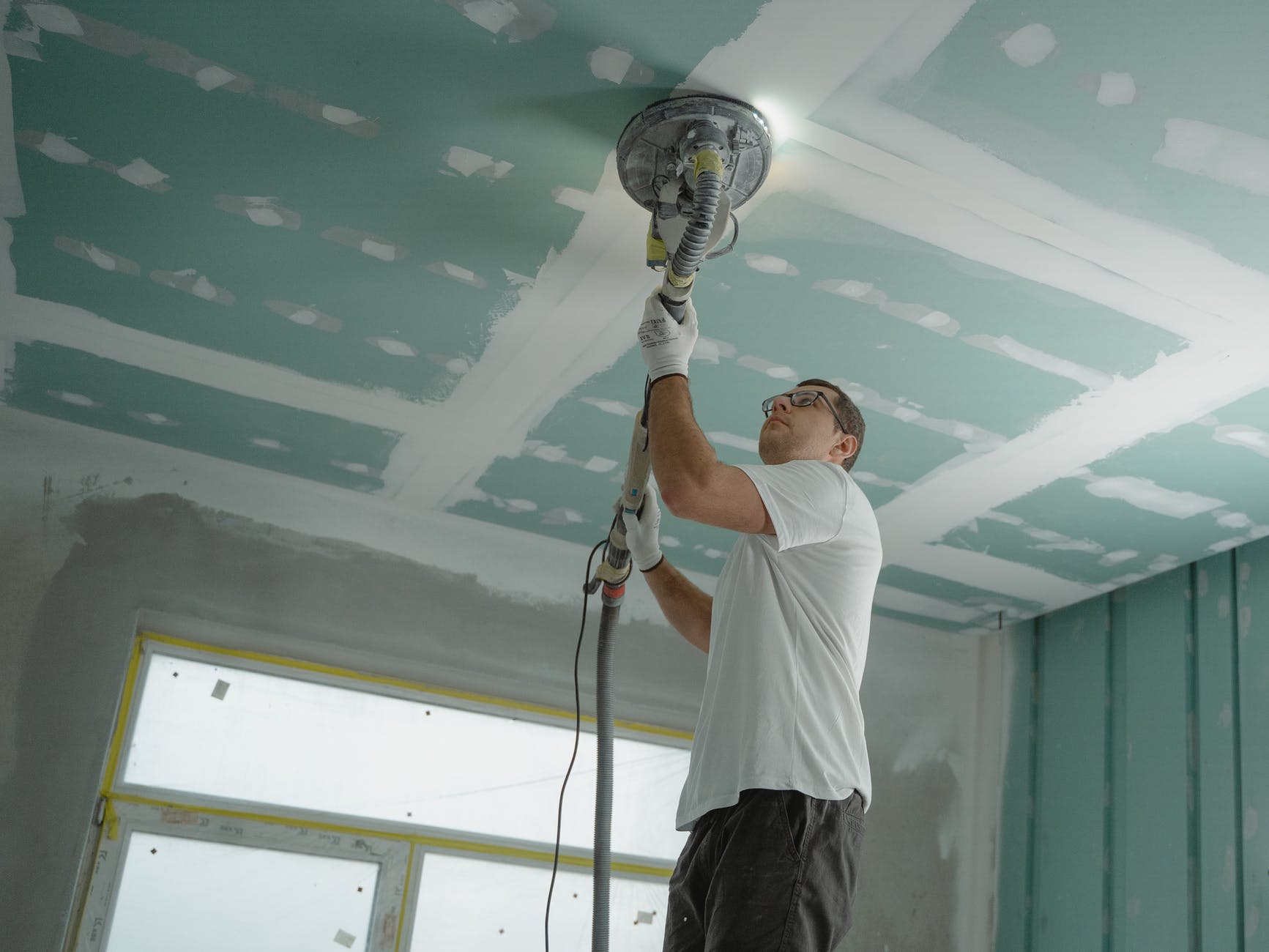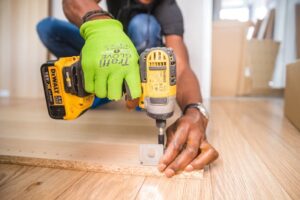
Photo by Tima Miroshnichenko on <a href="https://www.pexels.com/photo/man-polishing-the-ceiling-6474343/" rel="nofollow">Pexels.com</a>
Once you buy the home of your dreams, you might know that you are going to want to make some changes to it in the future. Big home improvements and renovations can often cost a lot of cash depending on whether you are doing something small or having your whole kitchen or bathroom done.
There are many options when it comes to raising the cash for your home improvements, although often a combination of several will usually be the best option for many people.
It can be a good idea to make a list of everything you want to do to your home and see which ones will make the biggest impact. Looking at value vs. cost can be a big help.
For example, the cost of your kitchen might be $10,000, but the value and quality of life you get from that could be much higher – and if you intend to sell your home and move, it can increase the value of the home by a lot.
Remortgaging
If you have a decent amount paid off on your mortgage, it can often be possible to unlock the value in your home by using one of many refinancing options; you can click here for more information about how that might work.
A remortgage can be one of the best options if your renovations are going to be something like a bathroom, kitchen, or extension.
Depending on your personal financial situation, you might find that you aren’t eligible, or you might need to make some larger early repayments to make it work. You can discuss all of the options with your chosen lender.
In general, there are a few big benefits to remortgaging:
- You can secure a better interest rate than you had previously
- You might be able to consolidate any other debts into one repayment
- You will be using the equity of your home to get the money
Keep in mind that with this route, you will be increasing the length of time you will pay your mortgage, you might have to pay some fees, and the process can take some time.
Photo by Andre Taissin on Unsplash
Unsecured loan
One of the more preferable ways that homeowners will look to raise the cash to pay for their home improvement projects is through an unsecured load. What makes unsecured loans great for many people is that they aren’t attached to your car or home (or any other assets).
You are going to need a high credit rating and a steady income to be offered an unsecured loan that will cover the amount you need for your home improvements.
The limit on unsecured loans is usually less than secured loans, but they will take all of your circumstances into consideration before making an offer.
There are some advantages for you when you consider an unsecured loan for your home improvements:
- Your assets aren’t at risk when you have this type of loan
- You usually get the cash pretty quickly
There are some drawbacks to getting an unsecured loan, though; the high interest can make what you pay back much higher than what you borrowed, you might not be able to pay it back early.
Cash
Not everyone has $15,000 in their bank ready for home improvements, although this can be one of the best ways to pay for the changes you want to make to your home. Paying in cash is one of the best ways because it means once you have paid for the home improvement, you aren’t going to be stuck paying off the loan.
Since you likely don’t want to blow all of your savings on home improvements, if you choose to use cash, it is good to combine it with one of the other available options.
It is also a better idea to look at what you will get the most benefit from in terms of home improvements and can save up accordingly.
There are some good things that come with using your own cash to pay for your home improvements:
- There are no fees, fines, charges, or interest to pay on what you use.
- You don’t have to pay anything back once the work is complete.
- You can book the home improvements when you like, instead of needing to wait for a lender to approve the loan and deposit the cash.
The downside to using a lot of your savings is that you will need to work on replenishing what you have used.
Photo by Karl Solano on Unsplash
Secured Loan
A secured loan is a money that is borrowed from you against your home or car (and occasionally other assets). A secured loan will have a lower interest rate than an unsecured loan – but it does put your assets at risk if you have a change of circumstances.
Secured loans are one of the easier ways for homeowners to borrow money, and more specifically, great for those who don’t have a perfect credit score.
Secured loans should be considered if you need to access a higher amount of cash to complete your project; you want to have room for renegotiation on the payments.
There are advantages to a secured loan:
- You will enjoy a lower interest rate than some other borrowing options.
- Your repayment period will usually be longer, making it easier to budget for it.
- Typically so long as your loan remains in good standing, you can improve your credit rating.
One of the biggest downfalls of the secured loan is that if your circumstances change, your assets can be lost, and the loan process itself can be longer than average.
A combination of cash and a loan can help spread your risk and allow you to keep some of your savings. Take into consideration which home improvements are the most important and how much value they add to the home and your lifestyle.
Many people prefer to use cash, but getting your savings looking healthy can be a long process too! Here are some great tips that can help you increase your savings without making huge changes to your lifestyle: A Penny Saved: Monthly Saving Tips for More Spending Cash.


